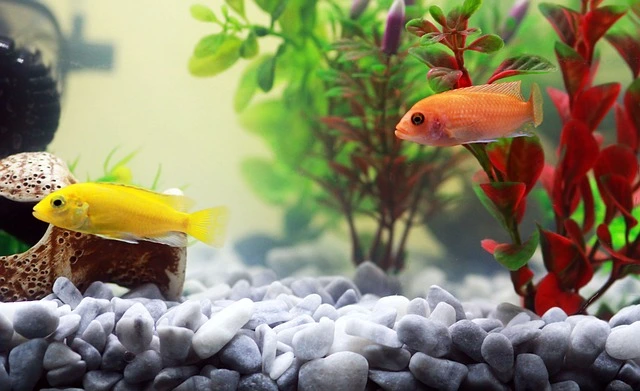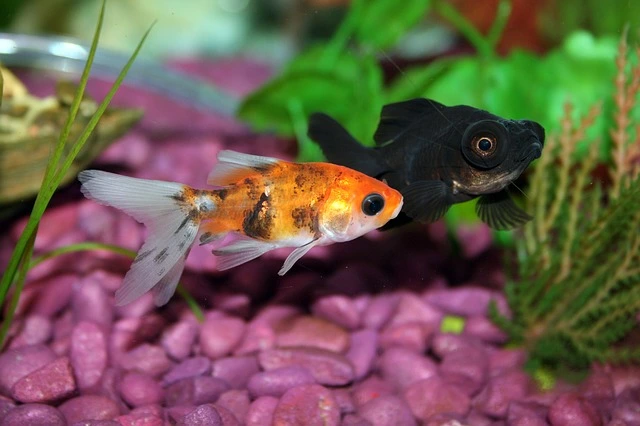
In today’s post, I’m going to show you what is the aquarium nitrogen cycle.
In Fact: Its significance, stages and a valuable guide.
Let’s dive right in.
Biosphere, Nitrification Process, and New Tank Syndrome are some terms you might have heard. There is only one cycle that all refer to – the Nitrogen Cycle. Because it’s so important. No, I don’t want that. Not likely, and neither do fish.
It will kill your fish if your fish poo in the water. Death from poo? No, thanks. A process called the Nitrogen Cycle helps to avoid this. It’s when good bacteria start living in your tank and filter media. This lets ammonia (toxic) turn into nitrite (toxic), then nitrite to nitrates (sound) (non-toxic).
Because that’s why it’s so important! The beneficial bacteria in your filter will help your fish live better by removing their waste. It can, however, be bad for the fish if you let the nitrate levels get too high. This will make the fish lose their color and appetite and allow algae to grow.

Some people say it can take up to two months. What’s the best answer? It will be done when it’s done. But if you like to maintain fish, you have to do it. And you’ll have to keep an eye on the cycle every other day as well. The best way to do this is to buy an aquarium test kit so you can check the levels of ammonia, nitrites, nitrates, and pH in the water.
As nitrite takes hold, ammonia levels will rise and then fall as the process goes on. Nitrate won’t show up until your tank has a lot of nitrite in it. A lot of nitrates will be made when it hits the proper levels. Nitrate will also make your nitrite levels go down. It’s safe to put your fish in the tank when you cannot be extended see or sense nitrites.
What are the 3 Stages of the Aquarium Nitrogen Cycle?
First stage – ammonia
Fish waste makes ammonia, which is terrible for most fish. After adding fish to a new aquarium, ammonia levels rise by the third day.
Second stage – nitrite
As nitrite-forming bacteria (Nitrosomonas) grow, ammonia is turned into nitrite, and while ammonia levels fall, nitrate levels rise. By the back of the first week behind putting fish in the water, nitrite levels usually increase, which they typically do.

Third stage – nitrate
As nitrate-forming bacteria (Nitrobacter) grow, nitrite levels fall, and nitrate levels rise. Nitrogen is made when there are no ammonia or nitrite levels in your tank. This means your tank has fully cycled, and your biological filter is working correctly (from 2-6 weeks). At low levels, nitrates don’t hurt fish very much. Routine water changes of about 10% should keep nitrate levels in the water safe.
On any surface in the aquarium, beneficial bacteria grow. They are focused on the filter sponger/media, which has a lot of surface area because it has a lot of space to grow. By running water through the filter, ammonia and nitrite are quickly turned into nitrates, which helps keep tank water from becoming toxic.
You should not completely clean a tank because this will kill the good bacteria. Instead, a gravel vacuum should perform partial water changes of approximately 10 percent per week to remove waste and uneaten food from the substrate. Using an aquarium-safe sponge, clean the sides of your tank. You can also wash filter media and decorations in old tank water to get rid of any dirt.
Why is the Nitrogen Cycle Important in Aquariums?
Nitrogen is essential because it lets fish live in a clean environment. After all, good bacteria get rid of harmful bacteria. However, it would help if you also kept a close eye on your ammonia levels to make sure they aren’t at a level that could be dangerous. We’d love to help. They know how to help your fish live longer, better lives.
It must have a place where good bacteria can live and grow: Set up your aquarium with a filter of some kind, and this bacteria will have a place to live when you do that, as well. It is most common for a water filter to be made of gravel, outside filters, or inside filters. There are many surface areas for bacteria to live and grow on with each of these.

There is no media on the under gravel filter because the gravel itself is the media. Other filters use synthetic media, such as foam or filter pads, to filter. Media with an excess of “surface area” for bacteria colonies to grow on is essential to think about when you choose it. Sponges are laced with holes, so there is much surface area inside the whole sponge. Pads are the same.
A person needs oxygen to live: The more oxygen there is in the water, the better the bacteria. To carry oxygen in your water, the water ought to be moving around a lot. There is a change in water that meets air, like on the surface. In this case, other molecules in water rise to the surface and exchange places with the oxygen molecules. It then moves water through the aquarium with the help of your filter pump. The water is now more oxygenated, and it passes over the bacteria in the water.
Expand Your Horizons: More Content You Might Enjoy
- Can I Twist Off The Aquarium Filter At Night?
- How To Keep Your Aquarium Fish Healthy?
- Top 7 Best Aquarium Coffee Tables For Fishes
- How To Clean A Fish Tank? Best Tips